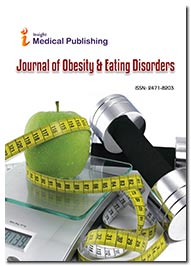Abstract
Association of CUN-BAE, BRI and Hypertension among Adolescents Aged 12-18 Years in US, NHANES, 1999-2018
Background: CUN-BAE (Clínica University of Navarra - Body Fat Estimator) and BRI (Body Rounds Index) are associated with adult’s hypertension. We aimed to assess whether CUN-BAE, BRI is associated with the prevalence of hypertension in adolescents and whether it is superior to Body Mass Index (BMI).
Methods: 12,605 adolescents aged 12-18 years were enrolled from the National Health and Nutrition Examination Survey (NHANES). Correlations between CUN-BAE, BRI and the prevalence of hypertension in adolescents were analysed using logistic regression. Receiver Operating Characteristic Curve (ROC curve) was used to predictive value for the prevalence of hypertension in adolescents.
Results: CUN-BAE, BRI, BMI were positively associated with the prevalence of hypertension in adolescents (The multivariable OR (95%CI): 4.47 (3.44-5.82), for CUN-BAE, 2.95 (2.38-3.66) for BRI and 3.97 (3.11-5.07) for BMI, for quartiles 4 versus quartile 1, respectively) and the relationship was monotonically increasing (P <0.001 for All trends). The effects of CUN-BAE, BRI and BMI on hypertension were more pronounced in participants aged 15-18 years. Significant association between CUN-BAE and prevalence of hypertension in adolescents observed only in male. BRI had more significant effects on hypertension in female. CUN-BAE and BRI did not show significant superiority over BMI in predicting the prevalence of hypertension in adolescents.
Conclusions: CUN-BAE and BRI were significantly and positively associated with the prevalence of hypertension in adolescents, especially among participants aged 15 years and older. But they were not a substitute for BMI. CUN-BAE and BRI were unique in assessing the risk of hypertension in adolescents.
Author(s): Xiaojing Yuan, Taihua Long, Xiangbin Zhong, Honglin Cai, Yuting Li and Xia Zeng
Abstract | PDF
Share this

Google scholar citation report
Citations : 548
Journal of Obesity & Eating Disorders received 548 citations as per google scholar report
Abstracted/Indexed in
- Google Scholar
- China National Knowledge Infrastructure (CNKI)
- Directory of Research Journal Indexing (DRJI)
- WorldCat
- Geneva Foundation for Medical Education and Research
- Secret Search Engine Labs
Open Access Journals
- Aquaculture & Veterinary Science
- Chemistry & Chemical Sciences
- Clinical Sciences
- Engineering
- General Science
- Genetics & Molecular Biology
- Health Care & Nursing
- Immunology & Microbiology
- Materials Science
- Mathematics & Physics
- Medical Sciences
- Neurology & Psychiatry
- Oncology & Cancer Science
- Pharmaceutical Sciences

